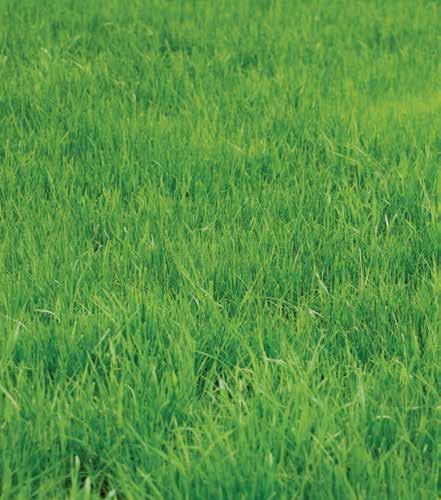
3 minute read
Indoor Gardening: The Whole Plant
Generally, we grow our edible plants with one specific part of each variety in mind based on its unique culinary characteristics. Whether it’s the fruit of tomatoes, the leaves of lettuce, or the roots of carrots, we tend to cherish one component and discard or compost the rest (rightly so, in most cases, due to undesirable tastes and textures of the ancillary portions). There are, though, a handful of plants that can be grown with the WHOLE plant in mind; plants whose desirable qualities for consumption aren’t limited to one particular segment. Not to suggest that composting or repurposing plant material as animal feed is in any way a misuse, but there’s something special to me about a plant that we, as humans, can consume (and enjoy) in its entirety. A good case in point: radishes.
Part of the Brassicaceae Family that includes cabbage, broccoli, cauliflower, Brussels sprouts and mustards, radishes conjure images of round red or cylindrical white roots adorned with a handful of disposable foliage. Thinly julienned slices add a subtle heat to our salads. Matchsticked slivers enhance our sushi rolls, and pickled strands spice up our “not-so-street” tacos. But to ignore the rest of a radish plant is to do it a great disservice. In fact, a radish plant can be eaten far before the commonly-known edible root even begins to form.
After just a week or two from planting, seedlings known as “microgreens” can be harvested and enjoyed in salads, sandwiches, wraps, smoothies and more. They add a peppery taste, similar to the fully formed root, while also providing a massive boost of antioxidants, vitamins and minerals, including vitamin C, E and K. Because they are harvested so quickly after planting, they don’t require any fertilizer or nutrients. Every- thing they need to reach harvesting height (approximately 2-3 inches) is already present in each seed. Fill a tray or plastic container with a thin layer of soil, no more than an inch or two deep. Cover the soil with radish seeds and then lightly sprinkle soil over top. Mist the top layer with water each day, and you’ll start to see sprouts popping through the surface in a few days. Light requirements are almost nonexistent, but a small grow light or well-lit windowsill will quickly turn the first embryonic leaves green. Within the blink of an eye, you’ll be ready to harvest, clipping clumps of fresh microgreens, just above the soil’s base.
Since the energy to sprout is already contained in the seeds themselves, soil isn’t a requirement to grow microgreens. Any type of grow media that can retain moisture and provide a foundation for young roots is more than sufficient – even wet paper towels will do the trick. Microgreen kits can be pur-
JASON MISPAGEL Indoor Gardener
chased that include trays to grow in, along with mats pre-loaded with seeds and enough mass to maintain root structures through harvest.
Allow sprouts to continue growing, and you’ll soon have an opportunity to harvest their leafy greens. But be aware, you’ll need more than a thin layer of soil and a seedling tray. Without space for roots to expand and readily available nutrition, foliage will struggle to develop. Grab a well-draining potting soil mix and pour it into a container that allows at least 6 inches of depth. Sow seeds just as you would for microgreens but thin them out for 2-3 inch spacing between plants. Keep soil moist but not oversaturated and hang a broad spectrum T5 fluorescent light around 6-12 inches above its surface. Within 2-3 weeks, young leaves, best eaten raw, will be ready to harvest. If allowed to mature too long, leaves will begin to develop small hairs that many find unpleasant to consume. However, there are varieties such as White Icicle, Per- fecto and Red Head, whose leaves never develop these hairs. Why eat radish leaves? Just like their microgreen counterparts, they’re packed with nutrition: vitamin A, B1, B6, B9, C, calcium, potassium and iron.
As leaves mature above-ground, the traditional vision of a radish (a swollen tap root) is ripening under the surface. Four to five weeks from planting and radish roots will be ready for harvest, but there’s still one more opportunity to consume radishes that needs to be discussed – seeds.
Rather than harvesting the roots, allow your radishes to flower and pollinate each other. Each plant will produce both male and female flowers but is unable to pollinate itself. Therefore, hand pollinating from one plant to another or using an oscillating fan indoors will be necessary to fertilize female flowers. The result will be seeds that form in edible “pods” with all the flavor of the peppery roots and the crunch of a snap pea.
Burr Oak Woods Nature Center Native Plant Sale & Naturescaping Workship 1401 NW Park Rd, Blue Springs 64015. March 11 12:304:30 p.m. Workshop hours 8 - 12 a.m. 816-228-3766
Missouri Prairie Foundation Native Plant Sale at Anita B. Gorman Conservation Discovery Center, 4750 Troost Ave, Kansas City MO 64110. Saturday, April 15 & May 13, 10 a.m. to 2 p.m.
Deep Roots Native Plant Sale at Metropolitan Community College, Longview 500 SW Longview Rd, Lee’s Summit 64081. April 22, 10 a.m. to 2 p.m. deeprootskc.org
Native Plant Sale by Burroughs Audubon at 6212 NW Barry Rd. KC MO 64154. Backyard Bird Center 816-746-1113. Saturday, April 22, 10 a.m. to 2 p.m.
Shawnee Indian Mission Foundation - Native Plant Sale at 3403 W. 53rd St, Fairway KS 66205. Saturday, April 29, 9 a.m. to 2 p.m. shawneeindianmission.org









